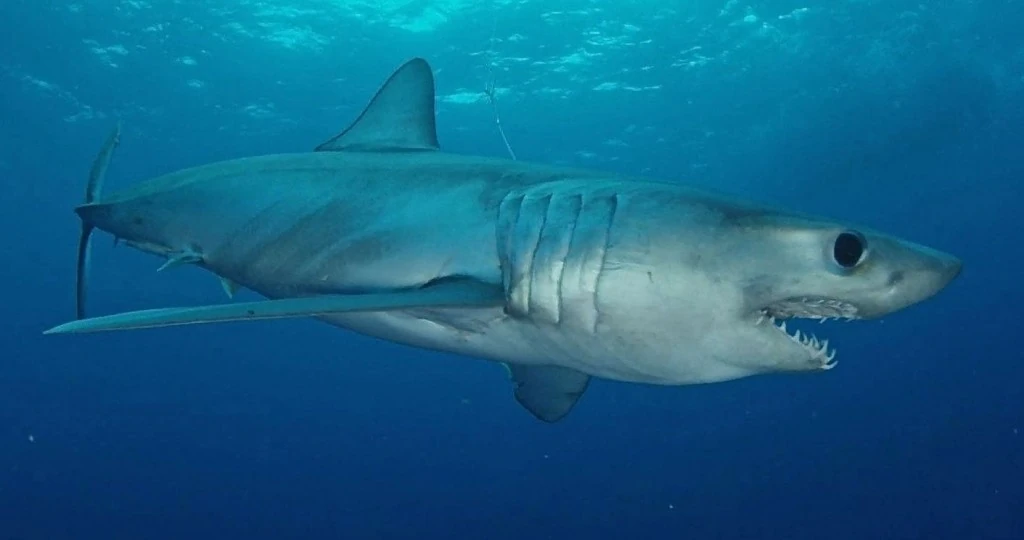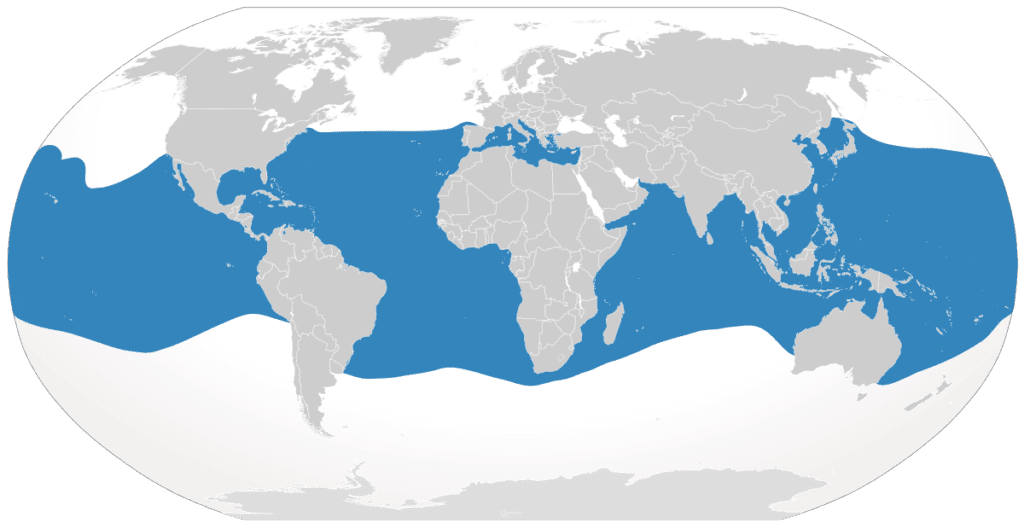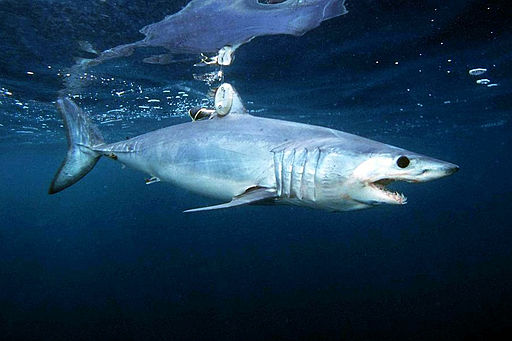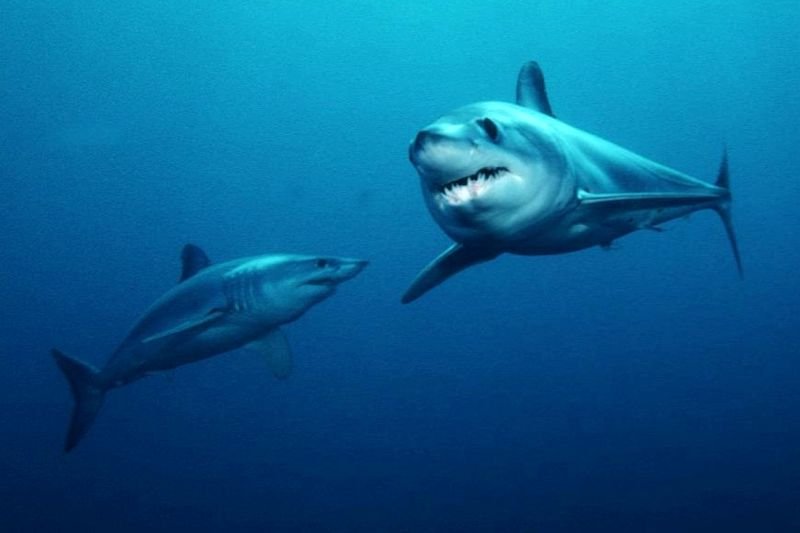Mako dolgoplavtseva (Isurus paucus)- a rare and little-studied shark belonging to the family Lamnids (Lamnidae), along with the more famous short-finned mako (Isurus oxyrinchus) and great white shark (Carcharodon carcharias).
It is known for its long pectoral fins, strong body and fast movements. Although Mako dlinnoplavtseva is not as fast as her "relative", she is one of the most dangerous ocean predators.

🔍 Main Features:
✔ A rare species that is difficult to study
✔ It has the longest pectoral fins among lamnid sharks.
✔ It occurs at great depths
Scientific classification
🔬 Classification of long-finned IACS:
✔ The Kingdom: Animals (Animalia)
✔ Type: Chordal (Chordata)
✔ Class: Cartilaginous fish (Chondrichthyes)
✔ Row: Lamnopodobnye (Lamniformes)
✔ Family: New products (Lamnidae)
✔ Gender: Mako (Isurus)
✔ View: Mako dolgoplavtseva (Isurus paucus)
📌 Interesting!
Latin name paucus means "rare”, which highlights the infrequent occurrence of this species.
Appearance and dimensions
📏 Main Features:
• Body length: 2.5-4 m, maximum value – 4.3 m
• Weight: 70-200 kg, individual instances-to 250 kg
• Life span: 30-35 years old
🎨 Color scheme:
• Dark blue or purple back
• Light sides with a metallic sheen
• White belly
🔍 The main differences from short-floating mako:
• Longer pectoral fins
• A more streamlined body
• Slower swimming pace
📌 Interesting!
Long-float mako has less robust and shorter snout, than its faster "relative".

Living environment
🌍 Where does Mako dolgoplavtseva live?
• Tropical and subtropical waters of the Atlantic, Pacific and Indian Oceans
• Mediterranean Sea (rare)
• Deep water areas (200-600 m)
🏝 Living conditions:
• Prefers warm waters (20-25°C)
• It is often found in the open ocean
• Does not approach the coast as often as korotkoplavtseva mako
📌 Interesting!
Long-float mako rarely gets into fishing towns, so very little is known about it.
Lifestyle and behavior
⚡ How does Mako dolgoplavtseva hunt?
• Uses long fins to maneuver in the water column
• Ambushes or stalks the victim
• It can reach high speed, but not as fast as the short-floating mako
🦈 Basic behavior:
• Lone Predator
• Non-aggressive to humans, but potentially dangerous
• It can rise closer to the surface at night
📌 Interesting!
Mako dlinnoplavtsevaya rarely detected in attacks on people, because it lives at great depths.

Food
🍽 What does mako eat?
• Squid, octopus
• Tuna, mackerel, sea bass
• Smaller sharks and seabirds (in rare cases)
🔍 Hunting methods:
• Uses sharp teeth to hold down prey
• Can attack from above, taking advantage of the darkness of deep waters
• It rarely jumps out of the water, unlike the short-swimming mako
📌 Interesting!
Mako dlinnoplavtsevaya often hunts squid and can be sent to depth of more than 600 m.

Reproduction
👶 How does Mako dolgoplavtseva breed?
• Viviparous species
• Pregnancy lasts 15-18 months
• 2-8 cubs are born, which immediately become independent
📌 Interesting!
As in the short-finned mako, embryos of this species can eating each other in the womb (oophagy).
Human interaction
⚠ Is mako dangerous?
• Only isolated cases of attacks on people have been recorded
• It is considered less aggressive than short-melting mako
🎣 Mako in fishing:
• It is valued for its meat, fins and liver
• Sometimes it gets caught in deep-sea fishing
📌 Interesting!
Through low number of employees Mako dlinnoplavtsevaya is listed in IUCN Red List as a vulnerable species.
Interesting facts
📌 TOP 5 facts about Mako Dolgoplavtseva:
1️⃣ It has the longest pectoral fins among the Lamnae sharks
2️⃣ It lives at depths of more than 200 m
3️⃣ It has a lower speed than the short-finned mako, but better maneuverability
4️⃣ It rarely comes into contact with humans, so it has been studied very little
5️⃣ Population declines due to accidental catch
Conclusion
Mako dolgoplavtseva (Isurus paucus) – a mysterious and little-known shark, which is one of the rarest ocean predators.
Her perfect body structure, long fins and deep-sea lifestyle they make it unique among lamnid sharks.
Unfortunately, it is an endangered species, so its conservation is important for the ocean ecosystem.
🌊 A mysterious hunter of the deep sea that has yet to be fully discovered!
